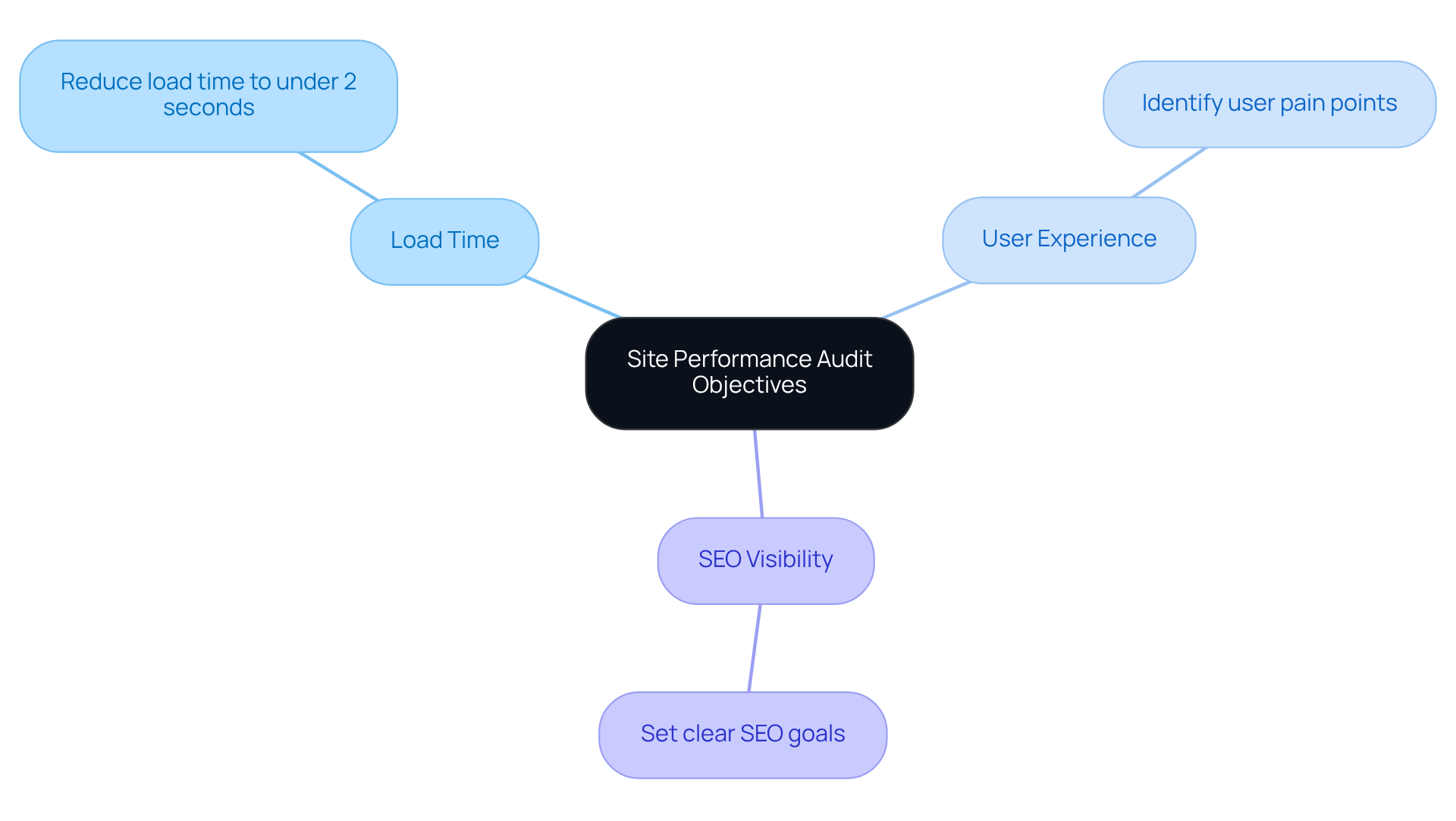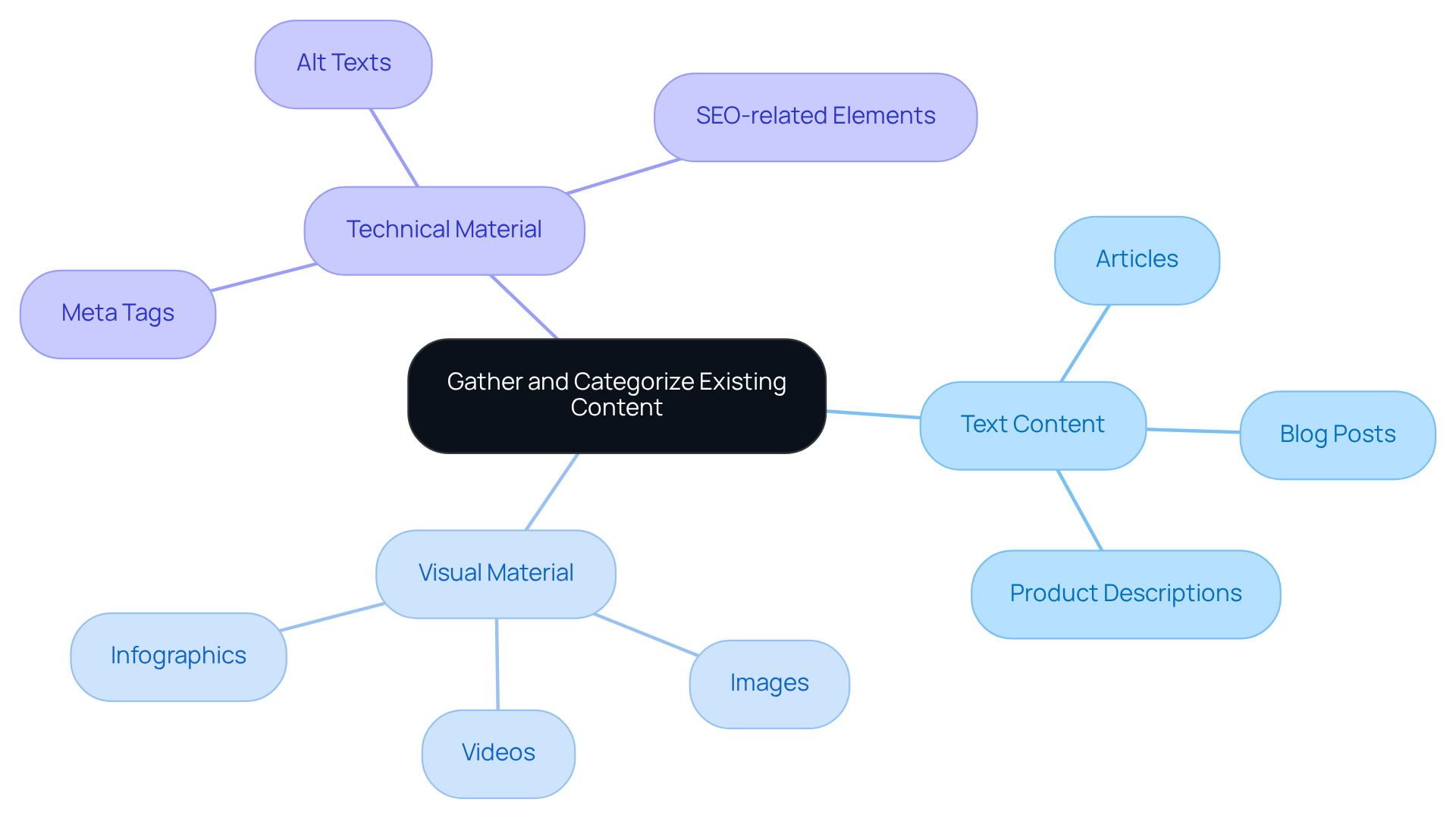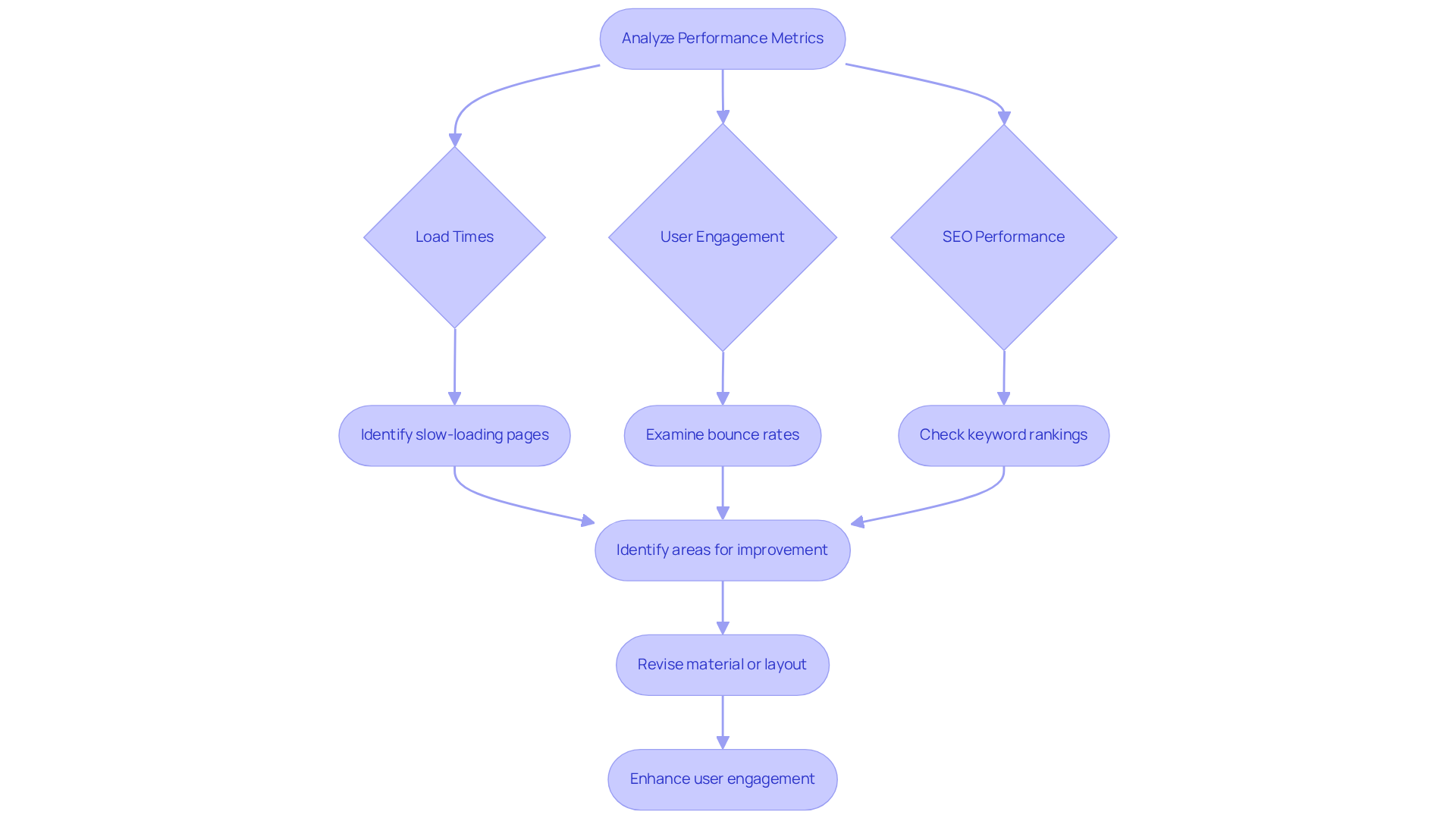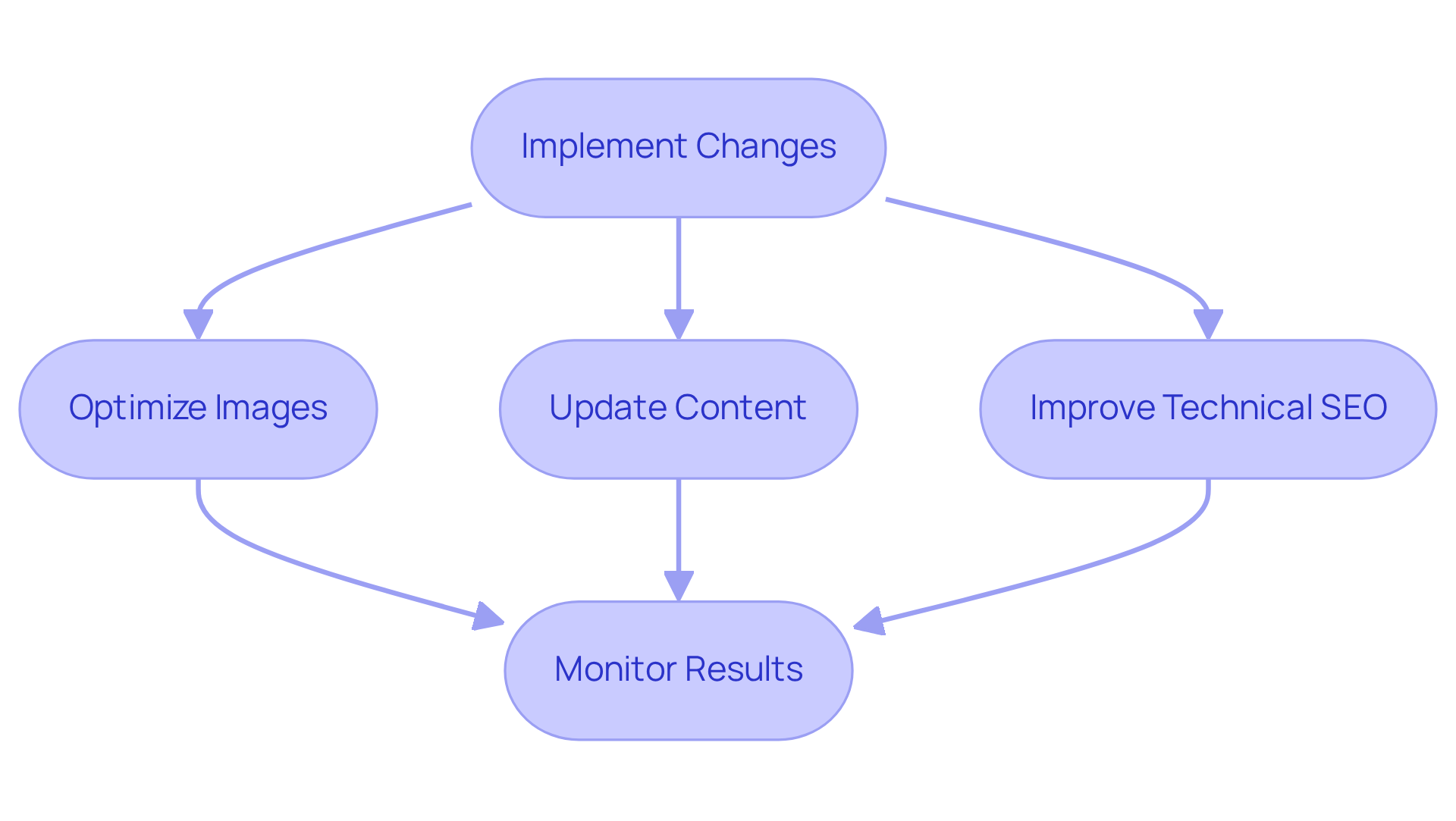Overview
In the fast-paced world of tech startups, many founders struggle with the daunting task of ensuring their site performs at its best. The problem often lies in the lack of a structured approach to auditing site performance, which can lead to missed opportunities for growth and user engagement. This can be frustrating and disheartening, especially when you know how crucial a well-performing site is for your success.
To address this challenge, there are four essential steps you can take to effectively audit your site performance:
-
Start by defining your audit objectives. What specific outcomes do you hope to achieve? Setting clear goals will not only guide your efforts but also provide a sense of direction amidst the chaos.
-
Gather and categorize your existing content. This step is vital, as it allows you to assess what you have and identify areas that may need improvement. Think of it as taking stock of your resources—knowing what you possess is the first step towards making informed decisions.
-
Analyze your performance metrics. Dive into the data to understand user engagement and identify pain points. This process may feel overwhelming at times, but remember, it’s all about making data-driven adjustments that will enhance your site's overall performance and user experience.
-
Implement the necessary changes while continuously monitoring the results. This is where the nurturing aspect comes in—be patient with yourself and your team as you adapt and refine your approach. Celebrate the small wins along the way, and don’t hesitate to seek feedback from your users. After all, their experience is at the heart of your mission.
By following these steps, you can transform the daunting task of auditing your site performance into a manageable and rewarding process. You’re not alone in this journey; many founders face similar challenges, and together, we can foster a community of support and growth.
Introduction
Understanding how well a website performs can truly be the difference between engaging users and losing them to competitors. Many tech founders find themselves facing this challenge, feeling the weight of responsibility as they strive to create a compelling online presence. A site performance audit not only highlights areas for improvement but also sets the stage for a more enjoyable user experience and increased visibility.
However, it’s common to feel uncertain about where to start and how to ensure that efforts lead to meaningful results. What steps can you take to effectively audit site performance and transform insights into actionable improvements?
Together, we can navigate this journey and uncover the solutions that will support your growth.
Define Site Performance Audit Objectives
Starting your audit site performance can feel overwhelming, but defining your objectives is a vital first step. Consider the challenges you face and what you truly want to achieve. Perhaps you’re struggling with slow load times. Aim for a specific target, such as reducing your page load time to under 2 seconds. This change can significantly enhance user satisfaction.
Additionally, think about the user experience. Are there pain points your visitors encounter that need addressing? Identifying these issues can lead to meaningful improvements.
Lastly, reflect on your site's visibility. Setting clear goals for boosting your SEO rankings can open doors to new audiences. Documenting these objectives not only guides your audit site process but also ensures that every step you take aligns with your aspirations.
Remember, you’re not alone in this journey; many tech founders face similar challenges, and together, we can find the solutions that work for you.

Gather and Categorize Existing Content
Next, let’s take a moment to gather all the existing content from your website. This includes:
- Text Content: Articles, blog posts, product descriptions, and more.
- Visual Material: Images, videos, and infographics.
- Technical Material: Meta tags, alt texts, and other SEO-related elements.
Once you’ve gathered everything, it’s important to classify this material according to its type, purpose, and evaluation standards. Consider using a spreadsheet to track:
- Content type
- URL
- Performance metrics (such as page views and bounce rates)
- Last updated date
This thoughtful categorization will help you identify which content resonates well with your audience and which areas may need a little extra love and improvement. Remember, you’re not alone in this process; many founders face similar challenges, and together, we can navigate these waters.

Analyze Performance Metrics and Identify Improvement Areas
In this step, it's important to take a moment to assess your site's performance data in the context of an audit site using tools like Google Analytics, GTmetrix, or PageSpeed Insights. Many founders face the challenge of slow-loading pages, which can frustrate users and lead to missed opportunities. Focus on areas such as:
- Load Times: Identify pages that are taking longer than expected to load, as this can significantly impact user experience.
- User Engagement: Look closely at metrics like bounce rates and average session duration. High bounce rates can indicate that visitors are not finding what they need, which can be disheartening.
- SEO Performance: Check how your site ranks for targeted keywords. Poor rankings can leave you feeling stuck, especially when you're working hard to grow your startup.
After gathering this important data, take a compassionate approach to identify key areas for improvement. For instance, if you notice that a page has a high bounce rate, think about how you might revise its material or layout. Small changes can lead to enhanced user engagement, making a world of difference for your visitors. Remember, you’re not alone in this journey—many founders have faced similar challenges and found success through thoughtful adjustments.

Implement Changes and Monitor Results
As you embark on this journey, it’s essential to implement the changes identified during your analysis. Many founders face challenges with their digital assets, which can lead to frustration and missed opportunities. By addressing these issues, you can pave the way for a more successful online presence.
One crucial step is optimizing images. Compressing them can significantly improve load times, making your site more user-friendly. Additionally, updating content is vital; revising underperforming material based on user feedback and effectiveness data can breathe new life into your platform.
Moreover, improving technical SEO is a key factor. Fixing broken links, enhancing meta tags, and ensuring mobile responsiveness can make a world of difference.
After implementing these changes, it’s important to monitor the results through an audit site using the same tools from the analysis phase. Tracking metrics over time will help you see if your changes lead to improved performance. Remember, it’s perfectly okay to adjust your strategies based on ongoing data. This process is a journey, and you’re not alone—many have walked this path and found success by staying attentive and adaptable.

Conclusion
Defining and executing a comprehensive site performance audit can feel overwhelming for many online businesses striving for growth and user satisfaction. It’s crucial to recognize that without clear objectives, it’s easy to lose sight of what truly matters. Gathering existing content, analyzing performance metrics, and implementing necessary changes can seem like daunting tasks, but they are essential steps toward enhancing your website's functionality and appeal. This structured approach not only addresses immediate concerns but also lays the groundwork for ongoing improvement.
Consider the importance of user experience and engagement; these are not just buzzwords, but vital components that can make or break your online presence. SEO plays a critical role in driving traffic, and by focusing on specific performance metrics—like load times and bounce rates—you can pinpoint areas needing attention. This insight allows you to make informed decisions that optimize your site effectively. By implementing changes based on these analyses and continuously monitoring the results, you can ensure that your efforts yield tangible benefits that align with your overall goals.
Ultimately, auditing site performance is more than just fixing problems; it’s about fostering a culture of continuous improvement. Embracing this journey means enhancing user experience, boosting engagement, and achieving better visibility in search rankings. Taking proactive steps today not only benefits your business now but also paves the way for a more robust online presence tomorrow. It’s imperative for businesses to commit to regular performance audits as a vital part of their digital strategy. Remember, you are not alone in this process—many have walked this path and found success through dedication and thoughtful action.
Frequently Asked Questions
What is the first step in conducting a site performance audit?
The first step in conducting a site performance audit is to define your objectives. This involves considering the challenges you face and what you want to achieve.
What specific target should I aim for regarding page load time?
A specific target to aim for is reducing your page load time to under 2 seconds, as this can significantly enhance user satisfaction.
Why is it important to think about user experience during the audit?
It is important to think about user experience because identifying pain points that visitors encounter can lead to meaningful improvements on your site.
How can setting goals for SEO impact my site?
Setting clear goals for boosting your SEO rankings can open doors to new audiences, helping to improve your site's visibility.
What should I do with the objectives I define for my audit?
Documenting your objectives is crucial as it guides your site audit process and ensures that every step you take aligns with your aspirations.




